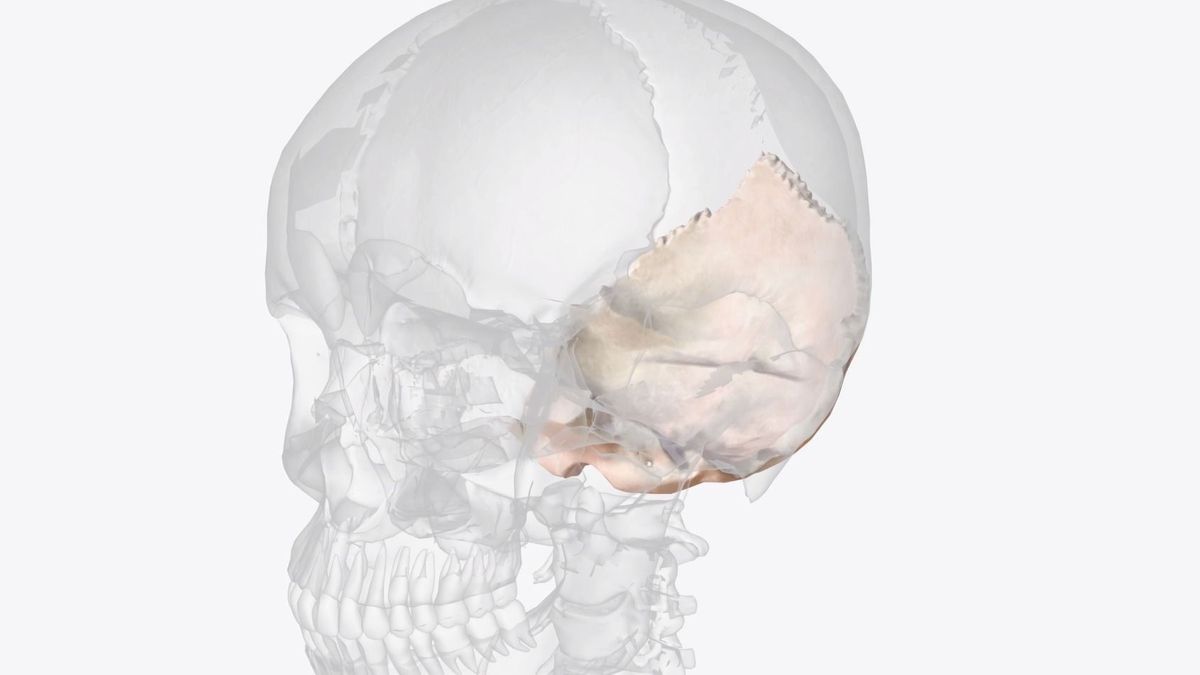
Published on
Updated
The occiput is one of the bones of the skull. What are the possible causes of pain in the back of the head? What are the treatments ? The answers of Dr Didier Poivret, rheumatologist in a hospital center.
Occiput: definition, pain and treatment
L’occiput is one of the bones of the skull. What are the possible causes of pain in the back of the head? What are the treatments ? The answers of Dr Didier Poivret, rheumatologist in a hospital center.
Definition and anatomy: what is the occipital bone?
Where is the occiput, synonymous with the occipital bone?
L’occiput is the bone located at the back of the skull and above the neck. Also called occipital bone, we therefore find it in the posterior part of the skull. The occipital bone is easily identifiable, since it is more precisely the protruding posterior part of the skull, also recognizable by its ovoid shape.
Function of the occiput
The role of the occipital bone is brain protection. L’occiput also supports the head thanks to a large ligament. The occiput allows the head to move up and down thanks to its connection with the top of the spine (first vertebrae).
What is the difference with sinciput?
The sinciput, in opposition to l’occiput, is the posterior part of the head. It is located at the top of the skull.
What is the foramen magnum?
What is the role of the foramen magnum?
The foramen magnum lies anterior and inferior to the occiput. “The spinal cord and the medulla oblongata pass through the foramen magnum. It is bordered by the occiput and on the side by other bones. THE trou occipital is an extremely important area. The occiput protects the cerebellum, which is the center of balance and coordination of movement,” explains Dr Didier Poivret, rheumatologist.
Why do I have pain under the occiput?
“Pain occurring at the base of the skull is very frequently linked to a poor working position, osteoarthritis of the neck or osteoarthritis between the neck and the occiput. It is not the bone itself that is painful, but rather the muscles or nerves (Arnold’s neuralgia) who pass by“, specifies the doctor.
Skull bone pathologies and pain
Pain or tightness in the neck muscles
THE occiput pain may be linked to muscle contractures in the neck, particularly in patients who spend a long time in front of a computer. Neck tension sometimes causes stress and contractures in the neck and occiput.
Headache
Sometimes migraines are so severe that they trigger neck pain. It may be a tension headache affecting both sides of the head, sometimes with a feeling of pressure in the back of the neck. “If the pain is violent, the patient must consult their doctor for a clinical examination”.
Cervical osteoarthritis
Cervical osteoarthritis is a degenerative disease of the joints of the cervical vertebrae. Stiffness, numbness and pain are the main symptoms of this pathology. “The reference examination for diagnosing cervical spondylosis is radiography, supplemented if necessary by CT or MRI.”adds Dr Poivret.
Sinusitis
Sinusitis is an inflammation of the sinuses. Maxillary sinusitis is the most common. “Sinusitis pain can be referred to the back of the head.”
Arnold’s neuralgia
The nerves, especially Arnold’s nerve which runs through the head muscle (one on the right, one on the left), are painful. This nerve goes to the eye. Referred pain may be accompanied by electric shocks. The infiltrations relieve the patient.
Fractures of the back
An occiput fracture is a medical emergency. It is visible using an x-ray. “In case of whiplashduring a car accident for example, symptoms such as tingling in the legs, pain in the arms or urinary problems, you must consult a neurosurgeon urgently”, warns the rheumatologist.
Examinations of the bone of the back of the skull
The reference examination for bones is x-ray. Secondly, a scanner is offered if necessary. Additional tests are sometimes requested, such as MRI. “In case of shock, we first do an x-ray. If in doubt, we request a scanner,” confides Dr. Poivret.
Treatments: how to relieve occiput pain?
In case of contractures or osteoarthritisthe best is to consult an occupational doctor or an occupational therapist in order to adopt the right working positions or a better arrangement of computers for example.
Cervical osteoarthritis is treated with muscle relaxants, painkillers associated with a spa treatment, rehabilitation sessions and the wearing of a cervical collar.
The Arnold’s neuralgia requires an infiltration or two to reduce pain.
The treatment of the fracture of the occiput is based on the immobilization of the area, except in the case of hematoma, which could then exert compression on the cerebellum. At the slightest doubt, the emergency doctor or neurosurgeon orders a CT scan. Surgery is considered in the event of a hematoma.
“On a medical level, we avoid any manipulation at the level of the cervical vertebrae. We always need at least an x-ray before deciding on treatment. Bad manipulation can in fact cause rare but serious accidents, such as paralysis of the arm. Generally speaking, the cervical vertebrae should not be manipulated,” concludes Dr Poivret.
